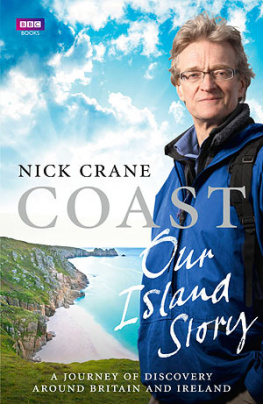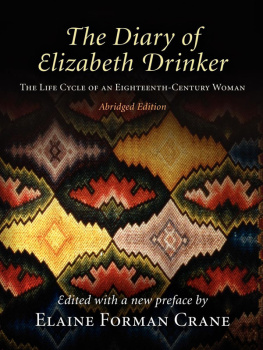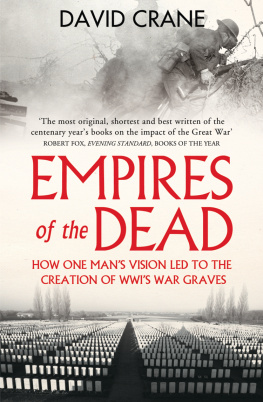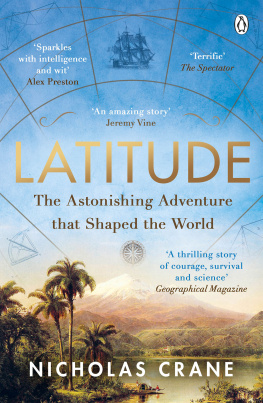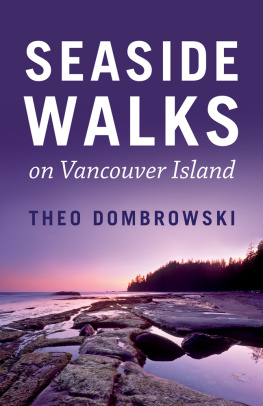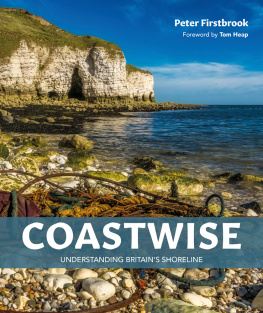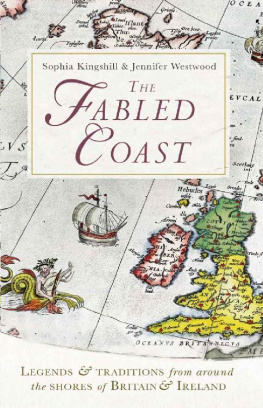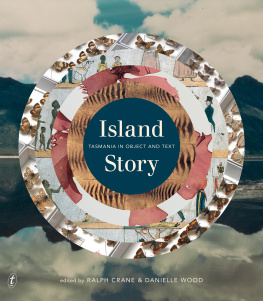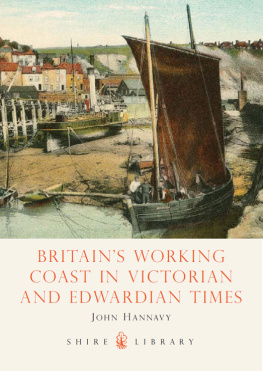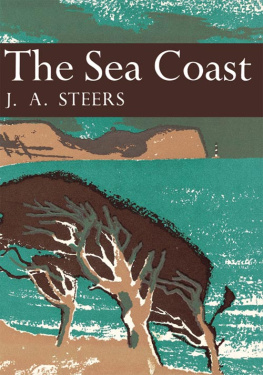Contents
About the Author
Best known for his work as a presenter on Coast and for his BBC series Map Man, Great British Journeys, Britannia and Town, Nicholas Crane is a writer and geographer with a passion for maps and exploration. In 19923 he walked alone for eighteen months along the 10,000-kilometre mountain watershed of Europe, describing this epic adventure in his award-winning book Clear Waters Rising. Then came Mercator, a biography of the Renaissance mapmaker, published in 2002 and described by The Sunday Times as standing at the peak of Cranes achievement. Nicholas most recent books are Great British Journeys (2007), which follows the exploratory footsteps of eight intrepid writers, and Coast: Our Island Story.
Also by Nick Crane
Mercator: The Man Who Mapped the Planet
Clear Waters Rising: A Mountain Walk Across Europe
Two Degrees West: An English Journey
Great British Journeys
To Imogen, Kit and Connie
Preface
Dear Reader,
Thank you for opening this book. I find myself writing these introductory words last. The manuscript is complete, and Im on the coast. Before me is a scene of beauty. Its an estuary in Wales at dusk. The tide is flooding and all the boats have turned to face the sea, as if they are soon to slip their moorings and sail away on a voyage of discovery. Only a few hours ago, the same estuary was a sandy plain, parted by a meandering blue thread. Off the beach at the estuary mouth, a kite surfer was twisting balletically from breaking crests, and mountains floated on the salt haze. Beside the lifeboat station, families were playing football and Frisbee and two boys had built a turreted castle that rose like Harlech from the smoothed foreshore. A steam train passed, and a Hercules transport plane, and a timber sailing boat, rigged medieval-style with a dipping lugsail. A pair of gulls opened mussels by dropping them from 30 feet onto a tabletop of small, flat stones. Now the sea is pouring in and the estuary is restless. The tide slaps and gurgles against the old stone bulwarks of cottages whose attentive windows have seen square-riggers and tramp steamers, barques loaded with slate, and herring boats in from gales.
Our coast has more stories than can ever be written. These enviable islands have an ideal climate for life to flourish, and theyre located in one of the busiest parts of the globe. They also have a very long history: the rocks that form our oldest shores date back three billion years, more than half the age of the planet. Visually, its a diverse spectacle. There are cliffs in the north of blackest basalt, and cliffs in the south of purest white; cliffs in the west as red as blood and sands in the east the colour of honey. There are sea stacks taller than Nelsons Column , and sea arches you can thread by boat. There are beaches framed by turquoise shallows and bays where dolphins play. Way back when the ice sheets melted, these seas were full of fish and you could feed a family from the foreshore. Is it any wonder that humans flocked to these coasts? The stories they brought lie layer upon layer around the edge of the islands. In this book, Ive chosen to tell just eight of those stories.
The stories are thematic, so the places Ive chosen to include are those that best illustrate the narratives; this isnt a gazetteer, and many coastal celebrities make no appearance at all, while plenty of lesser-known players are promoted to centre stage. The journey I take is not literal, but an odyssey through time and space. Having said that, most of the first-hand material I relate was accumulated on journeys of some sort. Each of the themed stories is chronological, so you can follow, say, fishermen from the early days of hunting with barbed harpoons through to beam-trawling, or the evolution of seaside resorts from the dipping of toes by wary Hanoverians to roller coasters and kayaking. I agonized and experimented before settling on the themed approach. My purpose was to explore the sources of our coasts extraordinary diversity, and by doing so, to gather insights into its value to us now, and in the future. I hope you find the eight journeys as fascinating as I did.
In the first story, I travel into the deep past to see how rocks and drifting continents and climate have created such a wonderful pattern of islands. The second story follows the fishers and foragers who discovered the natural bounty of these temperate, productive coasts. The third and fourth stories track the evolution of trading ports and the various means weve devised to defend our shores against our enemies. The fifth and sixth stories are tales of opportunism and selflessness (or sin and redemption) as we move from wrecking and smuggling to the heroes and heroines who made these shores safe by building lighthouses and manning lifeboats and coastguard stations. The seventh story looks at our recognition of the coast as a source of good health and at the ways in which we converted it into the biggest, most popular playground in the archipelago. In the final story, I follow the enduring role of the coast as a sacred place.
This book sprang from the success of the BBC series Coast. All who worked on its first series were startled (in the best possible way) by its unexpected popularity . Millions switched on, and have stayed loyal as BBC Birmingham produced series after series. Theres a sense that Britons are discovering how much fun the coast can be, and what a huge role it has played in forging our identity. This has less to do with nationality than with being islanders. Everybody who grew up on these islands has a relationship with the sea, imaginary or actual. None of us live more than a couple of hours from the high-tide line. The history of these islands was built upon an understanding of the sea, and as we look for more enlightened ways to amuse ourselves, the coast is being revalued.
Its the right moment for a rethink. Our coast describes the body of our land, and yet it faces a spectrum of intense human demands. We need it to feed ourselves, and we need it to provide the havens for the ships that fill our shops and fuel tanks. We need it for the power generators that send electricity to our fridges, factories and vehicles. We need the coast for our holidays, and for living beside, and we need it because it is a sanctuary, both for wildlife and for the human spirit. In these eight stories, I hope Ive shown why the coast is an unparalleled natural wonder, why its our defining resource, and why we should take every care to preserve it for future generations.
Nick Crane
August, 2010
Particular Thanks
We did a photo-shoot once, on a beach in Wales, and we were all there: historian Mark Horton, zoologist Miranda Krestovnikoff, archaeologist Neil Oliver and biologist Dr Alice Roberts. And Alices lime-green micro-bus. Other presenters have subsequently joined the team: Hermione Cockburn, Renee Godfrey, Kate Rew, Dick Strawbridge and, most recently, Tessa Dunlop and Adam Henson. I feel very fortunate to have shared the boat with you all.
Steve Evanson and Gill Tierney at BBC Birmingham not only built the boat, but managed to launch it on the epic circumnavigation that became the first series of Coast. Roly Keating, then the Controller of BBC2, gave Coast an enviable slot on the best TV channel in the world, and Janice Hadlow has kept it there. As BBC execs, Gary Hunter and now Bill Lyons have been invaluable champions of Coast, and so has the BBCs Emma Death, who was instrumental in forging such a successful partnership with the programmes co-producer, the Open University. Composer Alan Parker guitarist to the greats wrote the music that carries each film onto the next headland and Mike Bloore created
Next page
